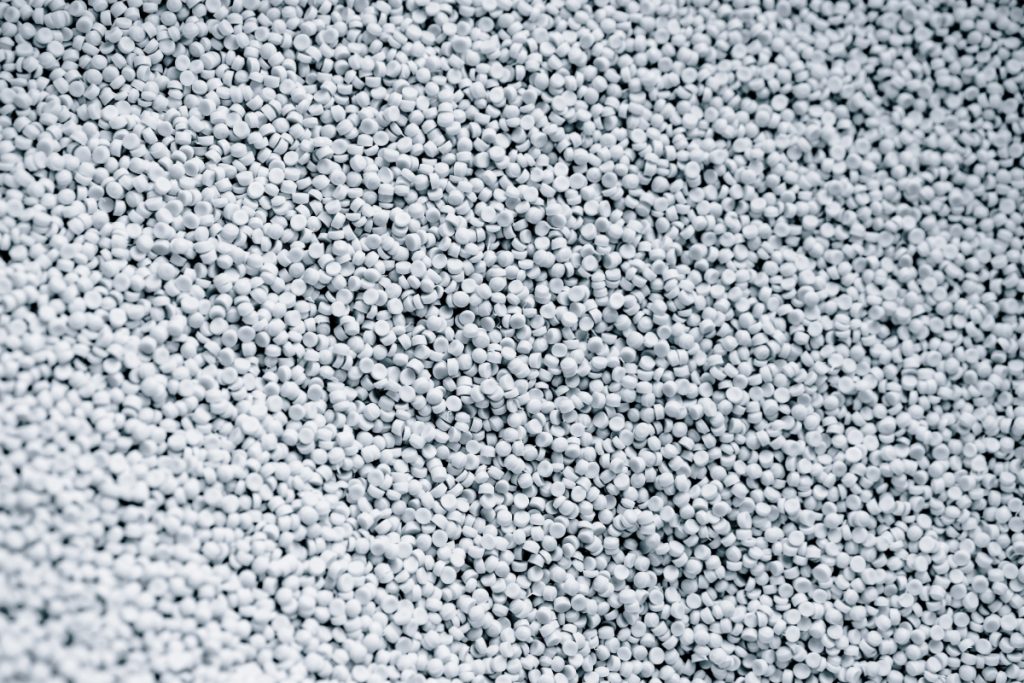What are things to consider before switching plastic materials?
- Physical properties
- Chemical compatibility
- Environmental factors
- Shrink rates
- Material-specific gates and vents
- Additives
After designing your part, choosing your resin, and creating your tooling, your plastic injection project is good to go. But then, there’s a sudden change of plans — rather than using Acrylonitrile Butadiene Styrene (ABS), you’ve decided to switch to Nylon.
You might think this means you just have to ship your new resin to your injection molding partner, and you’re good to go — but switching materials is a complicated business. If you’re thinking of trading one material for another, here are six things to consider before switching plastic materials.
With thousands of resins and grades to choose from, and countless new blends hitting the market every month, you will need all the help you can get to navigate the resin selection process.
Physical Properties
The first thing to consider is your plastic part’s physical requirements, and whether your new resin can fulfill them. Different materials will have varying tensile strength, stiffness or flexibility, and elongation at break.
Material Hardness
Tensile strength, also called material hardness, is the material’s resistance to indentation. This is measured by something called Shore hardness, which categorizes materials into type A and type D, measuring softer and harder plastics, respectively. The scale of hardness for both types goes from zero to a hundred.
For example, a rubber stamp typically uses resins that are fifty shore A, while a golf ball uses those with a score of sixty shore D. Different plastics are more applicable for certain products, so you must consider their Shore hardness.
Material Flexibility
Another factor is the plastic’s flexibility. A common misconception is that all hard plastics are stiff, and all soft plastics are pliable. However, this is not always the case. There is a big difference between the material being soft versus flexibility.
A material’s stiffness is its resistance to bending under stress — which is different from its hardness. For example, ABS plastics are harder than Nylon, but Nylon is stiffer than ABS. So, a Nylon ruler, despite being made from a soft material, would be much harder to bend than an ABS ruler.
Material Weight
The weight of the material plays a role in whether or not your new selection is good for your injection molding project. How heavy or light your new material — and consequently, your end product — is ultimately determined by its density.
Material Cost
The cost of switching to a new plastic for your injection molding project is definitely something you should consider before finalizing the switch. While product design and application are extremely important in the material decision-making process, certain resins may be too pricey in the long run for your budget.
Chemical Compatibility
Plastic products often come into contact with various chemicals, such as process reagents and cleaning solvents, which you should consider when selecting new resins. What chemicals is your end product likely to come into contact with, and does your new material perform adequately in these cases? It may be best to consult with your injection molding partner and their resin manufacturers to gather data about your new material’s performance with each chemical.
Environmental Factors
Aside from chemicals, plastic parts may be exposed to adverse environments, which your new resin should be able to resist. Factors such as extreme high or low temperatures, high humidity, bright sunlight, and more should be included in your calculations. Choosing the wrong resin for your application will affect its long-term serviceability and critical performance metrics for your product.
Shrink Rates
Different plastic materials have different shrink rates. This refers to how much the resin will shrink during the molding process, which has a big impact on manufacturability. For this reason, it is typically recommended to switch to a material with similar or lower shrink rates.
For example, Polycarbonate plastics have a shrink rate of around 0.004” – 0.006” per inch. On the other hand, acetal has a shrink rate of 0.022” – 0.030” per inch. Switching from PC to acetal without adjusting manufacturing parameters will produce a significantly smaller part.
This may not cause problems for certain applications. However, if producing parts for an assembly, the now smaller part may not fit correctly.
Material-Specific Gates And Vents
The gates and vents in your plastic injection molding setup are sized and situated for a specific material. This is because these components are highly dependent on how the molten resin flows into the molding chamber. Changing your material late into the design and manufacturing process without adjusting your gates and vents will cause issues. For example, flash and burn are common plastic part defects caused by inappropriate gate placement and size.
Additives
If you choose to work with a material that doesn’t quite meet your performance and physical requirements, then you could choose to use additives to modify its properties. Additives like fiberglass or carbon fiber could increase the stiffness of the resin.
However, using additives will affect factors like your shrink rate — fiberglass could significantly reduce the shrinkage of your part, for example. Using abrasive additives could also affect the lifespan of your plastic injection tooling, especially if it is not made from wear-resistant material.
Key Takeaway
Different plastic materials will come with their properties, advantages, and disadvantages, so it is important to look at all the possible factors that come with material selection.
Taking the things to consider before switching plastic materials into account, you will find the list of suitable resins is cut down considerably. This results in the most optimal material for your switch, and fewer issues for you, your designer, and your injection molding partner.
Need help with your product design and material selection process? Contact Richfields today. We draw on our extensive knowledge and experience with clients from various industries and countries to help you craft the best plastic products possible.
